NUS RESEARCH in brief

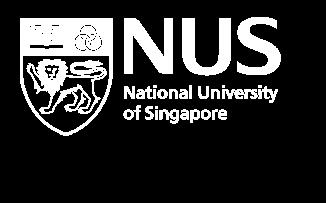



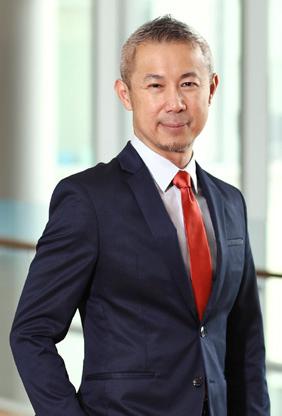
2020 has brought unprecedented challenges to all across the University.
Recognising NUS’ responsibility to lend expertise and resources towards the fght against Covid-19, several related studies were swiftly initiated. These included research towards point-of-care test kits, epidemiological modelling as well as therapeutic and vaccine development. Many of these projects are outlined in this issue of NUS Research In Brief. To further support such efforts, the University has invested seed funding towards the research and development of ten innovative ideas aimed at tackling the pandemic.
Change is inevitable with an event of this magnitude. The pandemic highlighted, for example, the vulnerability of modern global supply chains. Manufacturers struggled to procure basic materials, and ingredients, and retailers were forced to quickly adapt as consumers moved online. Companies across entire supply chains had to reconsider how employees could work remotely. For many, telecommuting became the norm.
Similar examples are echoed across industries. Today, people around the world are in the process of adapting to what will become the ‘new normal’. Governments and private industry are urgently seeking innovative solutions that will enable self-reliance, improve public health, and ensure resilience across all economic sectors. This places researchers in a unique position to effect change.
It is an opportune time for researchers to consider which felds will require such innovative solutions post-Covid-19, and to determine which skills are essential in developing and implementing those solutions. To this end, NUS has convened a task-force consisting of researchers from each of NUS’ faculties and schools, to prepare our researchers to identify new avenues for high impact, innovative research, that will emerge from the pandemic. To further enable such research we will also be establishing a “Reimagine Research initiative” in the coming months.
Despite the uncertainty that has accompanied this period, NUS researchers continue to exhibit both resilience and perseverance. As research resumes in the second half of 2020, we look forward to new discoveries, new technologies and new partnerships, that promise Singapore and the world an accelerated recovery from the pandemic.
Prof Chen Tsuhan Deputy President for Research and Technology and Distinguished Professor

10490 Research publications
Our researchers collaborated with institutes and universities from
161
3125 countries


4

Research Centres of Excellence
17

Schools and Faculties
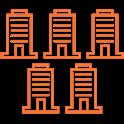
5 Corporate Laboratories
30 Research Institutes and Centres
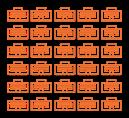
Total research funds awarded by external sources
NUS Research is centred on eight integrative research clusters. These are ageing, Asian studies, biomedical science and translational medicine, fnance and risk management, integrative sustainability solutions, maritime, materials science and smart nation.
From industry and other government sources (local and overseas)
Total awarded by the Ministry of Education Awarded by the National Research Foundation
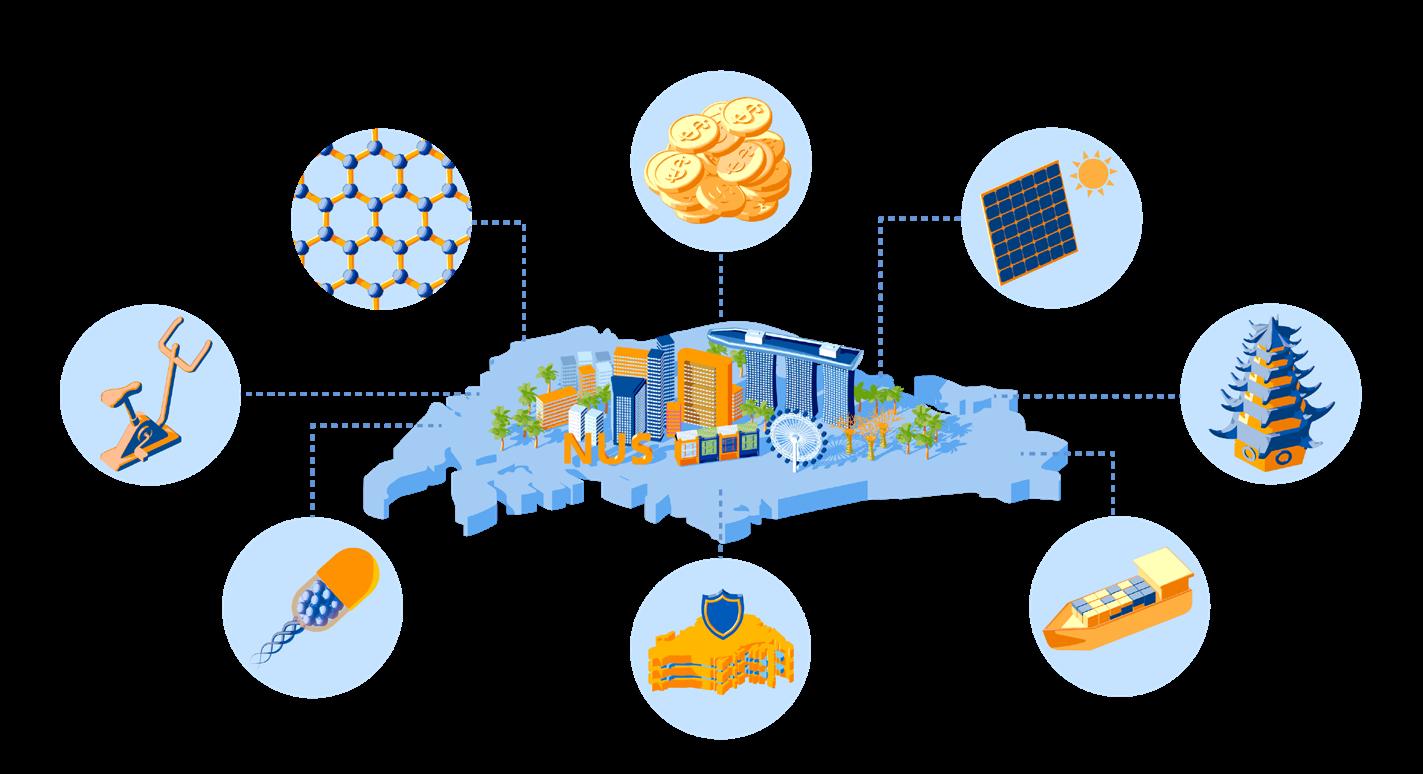

Our researchers work to innovate and develop solutions that meet the present and emerging needs of Singapore, Asia, and the world.
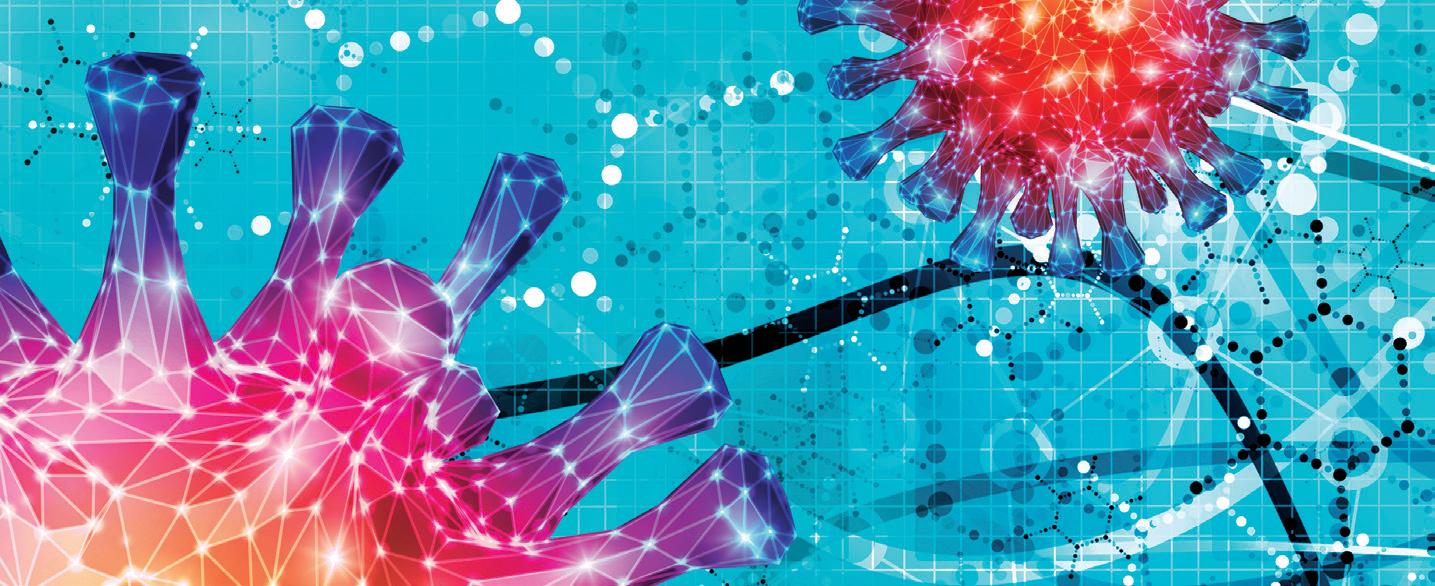
Like many nations around the world, Singapore has felt the direct impact of C ID-19. The pandemic continues to put a strain on our health system, on the economy, and on the livelihoods of Singaporeans.
Use this QR code to access the articles online
In these unprecedented times, universities have a responsibility to lend expert opinion that guides public policy, and at the same time, dedicate their research capabilities towards fnding solutions that will enable society to overcome this global crisis. Researchers from NUS have enthusiastically stepped forward to face these challenges.
Associate rofessor Alex Cook, from the Saw Swee ock School of ublic ealth SS S , and rofessor aul Tambyah, from the ong oo in School of Medicine S M , have become leading voices in the local media. Through their commentaries, they have provided regular and expert guidance on the implementation of mitigation strategies designed to prevent viral transmission, including social distancing, school closures, quarantine measures and the distribution and use of face masks.
The urgent and multifaceted nature of C ID-19 warrants interdisciplinary research and the rapid development of innovative solutions. To facilitate such research, NUS has initially invested S 1m to establish projects in detection and testing, behavioural studies, protective wear for frontline workers, recommendations for building environments, and intelligent data modelling. From this, 10 projects will be undertaken with an aim of leveraging existing expertise across the University.
n the biomedical front, several NUS researchers have secured funding from the National Medical Research Council NRMC to undertake studies that will aid in the control and management of the C ID-19 outbreak. For example, NUS researchers led by rofessor aul MacAry S M , are working in collaboration with A STAR researchers to accelerate SARS-Co -2 antibody research. These combined efforts minimise competitive overlap in order to focus on the development of improved serological and antigen tests.
The NMRC has also funded research led by Associate rofessor Alex Cook, who will undertake modelling and analytics for the C ID-19 outbreak in Singapore rof ang De un from S M, who will investigate the transmission and pathogenesis of SARS-Co -2 in the airways and Associate rofessor Raymond Seet from S M, who will undertake a seroepidemiology study among healthcare workers in Singapore.
An important aspect in defeating C ID-19 is society’s response to the pandemic. In particular, the adoption of recommended policies on telecommuting and social distancing. Such measures can only succeed if people trust and rely on the information that reaches them. To this end, the Centre for Trusted Internet and Community CITC , have launched a number of projects, and published several commentaries, aimed at identifying and addressing false information within the media related to C ID-19. Their work also focuses on identifying the prevailing concerns of society from social media activity.
As the world responds to this ongoing pandemic, NUS remains committed to contributing expert knowledge, and holistically pursuing practical and innovative solutions, to reduce the burden on our health system, to beneft our front-line workers, and to lessen the impact of C ID-19 on society.
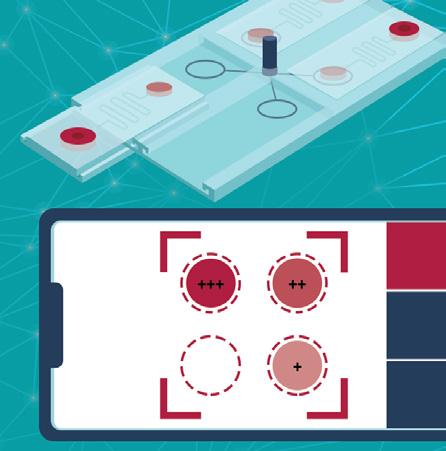

A point-of-care rapid diagnostic test for Covid-19 is being developed in research led by Asst rof Shao uilin from NUS i ealthtech. ased on the en ision en yme-assisted nanocomplexes for visual identifcation of nucleic acids diagnostic device, this test will enable direct recognition of SARS-C -2 RNA, with a visual signal enhancement that can be analysed via a smartphone app. Importantly, this test takes only 0 minutes to complete, and can be carried out at room temperature.
This work is being carried out in collaboration with Asst rof Catherine ng from NUS i ealthtech, rof iu in from Faculty of ngineering and Assoc rof Tan ee oo from NUS ong oo in School of Medicine.
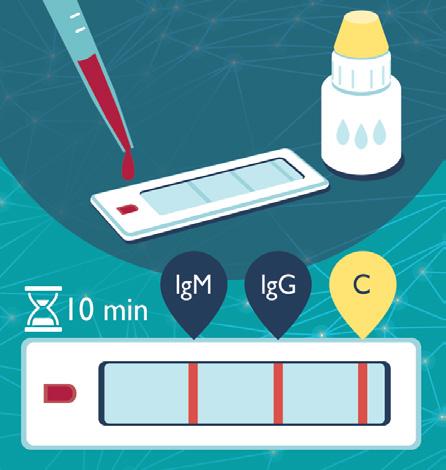

NUS IHEALTHTECH AND FACULTY OF ENGINEERING
orking together with iolidics, rof im Chwee Teck has developed a rapid diagnostic test kit that can detect SARS-C -2 IgG and IgM antibodies from human serum, plasma and blood within 10 minutes. This test kit has been approved for use in Singapore by the Health Sciences Authority. It has also been approved for use in the hilippines, USA and the U.
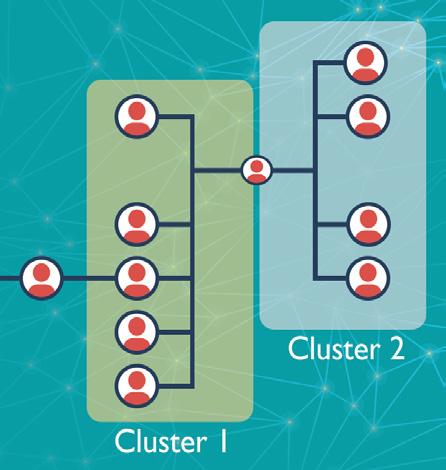


PROF LINFA WANG
DUKE-NUS
ASST PROF DANIELLE ANDERSON
DUKE-NUS
In a world frst, rof infa ang and Asst rof Danielle Anderson from the Duke-NUS merging Infectious Diseases rogramme, used serological testing to link different clusters of C ID-19 in Singapore. Their research aided in the identifcation of an important link between two major C ID-19 clusters in Singapore.
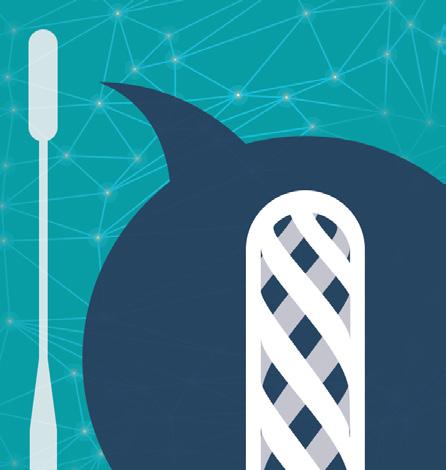




L-R: PROF
DR DAVID ALLEN, ASSOC PROF YEN CHING-CHIUAN, AND PROF FREDDY BOEY
NUS CENTRE FOR ADDITIVE MANUFACTURING (PROF FUH AND YEN), NUS HEALTH INNOVATION AND TRANSLATION (DR ALLEN) AND NUS INNOVATION AND ENTERPRISE
Researchers from the NUS Centre for Additive Manufacturing AM.NUS , together with ong oo in School of Medicine and the National Additive Manufacturing Innovation Cluster NAMIC have designed nasopharyngeal N swabs for use in C ID-19 testing.
Using D printing facilities at NUS, the team aim to produce 0,000 N swabs per day for national and regional use, given global shortages. The design and production of the swabs is carried out through injection moulding.
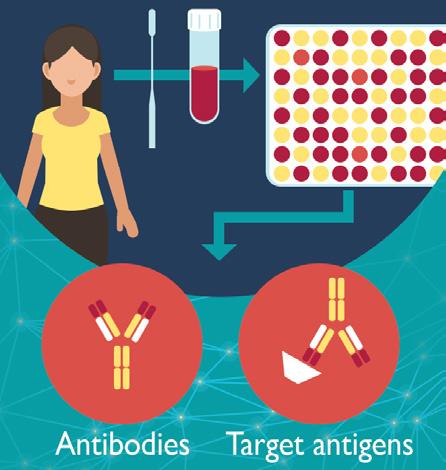

LIFE SCIENCES INSTITUTE AND YONG LOO LIN SCHOOL OF MEDICINE
Through the recently awarded NMRC C ID-19 Research Fund, Assoc rof aul MacAry is working on the development of serological and salivary tests for C ID-19 antibodies. These tests will provide critical insights into the effectiveness of experimental vaccines.
is team is also profling the immune response in patients in Singapore who have recovered from C ID-19. This research identifes key cells and molecules that enabled patients to fght off infection, and identify potential therapeutic human antibodies, and their targets, for clinical development.
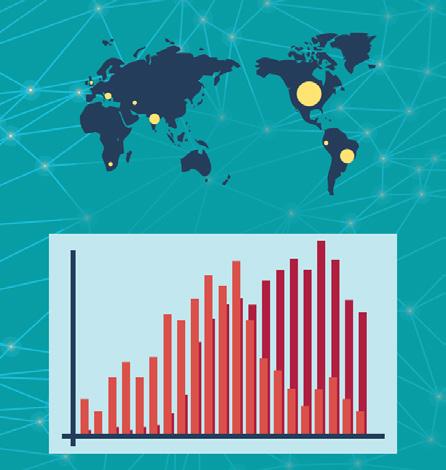


ASSOC PROF ALEX COOK
SAW SWEE HOCK SCHOOL OF PUBLIC HEALTH
ASST PROF HANNAH CLAPHAM
SAW SWEE HOCK SCHOOL OF PUBLIC HEALTH
ith an interdisciplinary team of experts in mathematics, computing, statistics, geography and epidemiology, and in collaboration with M , NCID and NU S, Assoc rof Cook and Asst rof Clapham conduct epidemiological modelling into C ID-19. Their research has produced numerous policy recommendations, including into ICU capacity, usage scenarios, realtime forecasting, social distancing and school closure evaluation, and importation risk.
The research conducted by the team has been published in several prestigious scientifc journals including the New ngland ournal of Medicine, The ancet, ancet Infectious Diseases, Clinical Infectious Diseases and the ournal of Clinical Microbiology.
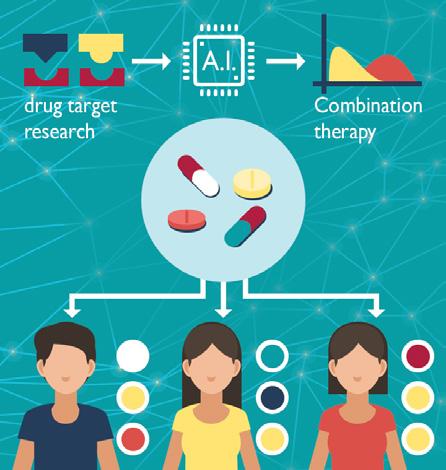

PROF DEAN HO
FACULTY OF ENGINEERING AND N.1 INSTITUTE FOR HEALTH
rof o is aiming to harness Artifcial Intelligence AI for drug development against C ID-19. Through this work rof o aims to generate a ranked list of actionable drug combinations. This will provide a clinicianguided selection of top-ranked drug combinations based on patient sensitivity toxicity to certain drugs as well as global drug shortages.



ASSOC PROF JEREMY LIM
SAW SWEE HOCK SCHOOL OF PUBLIC HEALTH
ASST PROF HUSO YI
SAW SWEE HOCK SCHOOL OF PUBLIC HEALTH
The team is using mixed methods research to investigate the social activities of foreign workers in Singapore. This will provide an understanding of the movement patterns and social interactions of migrant workers from major communities in Singapore. ith a target sample si e of 1000, and by conducting phone interviews, the team aim to cover out of the purpose-built dormitories.
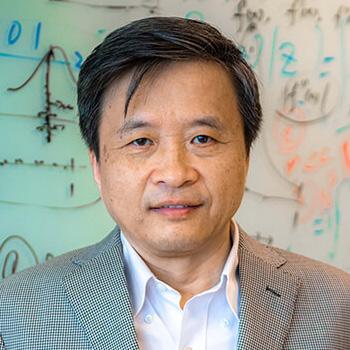
FACULTY OF SCIENCE
NUS Science Dean and Tan Chin Tuan Centennial rofessor Shen uowei was elected as a fellow of The orld Academy of Sciences T AS in anuary, 2020. ased in Trieste, Italy, T AS is a global science academy under the United Nations ducational, Scientifc and Cultural rgani ation UN SC .
Thirty-six new T AS Fellows were elected into its membership, including two mathematicians. rof Shen will be among the global academy’s 1,2 fellows, representing over 100 countries.
rof Shen is a mathematics professor of international renown. e was nominated for his fundamental contributions to wavelet and Gabor frame theory and their applications. e is a pioneer of a frame-based approach for image processing and analysis, and has developed many effcient algorithms that solve real life problems in various applications. He has also played a leadership role in promoting applied mathematics in Southeast Asia, and consistently features on the annual ighly Cited Researchers report.
Prof Shen also holds fellowships of the Singapore National Academy of Science, Society of Industrial and Applied Mathematics, and the American Mathematical Society. e has also received the National Science Award of Singapore, in 199 .

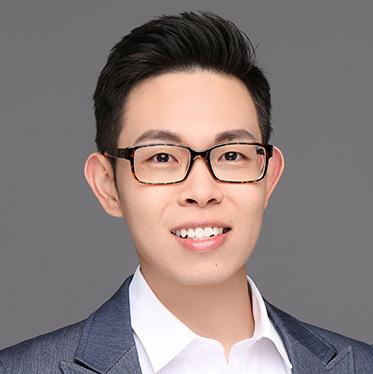
FACULTY OF SCIENCE AND CENTRE FOR QUANTUM TECHNOLOGIES
Asst rof oh uanqian from NUS hysics and the Centre for uantum Technologies was named one of the 1 Rising Talents worldwide by the UN SC and ’ real Foundation’s For omen in Science programme on 11 February 2020.
Asst Prof Loh is a pioneer in the manipulation of molecules at the singlemolecule, single-quantum-state level. y working at the exciting intersection of atomic physics and quantum chemistry, she works towards harnessing these ultracold molecules for explorations of new condensed matter phases, quantum information storage, and more.
The ’ r al-UN SC International Rising Talents awards are given to “the 1 most promising researchers” among almost 2 0 scientists previously selected for regional For omen in Science fellowships. reviously, Asst rof oh received the 201 ’ r al Singapore For omen In Science National Fellowship for the physical and engineering sciences for her research on quantum simulation.
FACULTY OF ENGINEERING
Assistant rofessor Andy Tay from NUS iomedical ngineering was selected by the orld conomic Forum F to be in its Class of 2020 oung Scientists. The only Singaporean to be selected for the honour this year, Asst rof Tay is one of 2 exceptional researchers from 1 countries across the world recognised for their research at the cutting edge of discovery.
The oung Scientists community was created in 200 to convene rising-star scientists and engage them in the work of the F to integrate scientifc knowledge into society for the public good. The community consists of extraordinary scientists from across academic disciplines and geographies all of whom are under the age of 0.
Asst Prof Tay is passionate about developing multi-scale technologies to interface with the body’s immunity. is current work focuses on developing new technologies and materials to engineer immune cells, tissues and systems, with the aim of preventing and treating cancer.
NUS Researchers are widely recognised for their contributions to academia, industry and society. For more recent awards visit https://news.nus.edu.sg/staff-awards
New Centre for Trusted Internet and Community to help build an accountable Internet and improve information literacy

The rise of the Internet and the popularity of social media have generated increasing discussion on topics such as the future of privacy, freedom of expression, misinformation and disinformation, as well as maintaining social security and stability. To comprehensively address these pressing issues which will evolve in tandem with Singapore’s journey towards becoming a Smart Nation, the National University of Singapore (NUS) has established a new Centre for Trusted Internet and Community CTIC , dedicated to the inter-disciplinary study of the Internet and its implications on the society of the future.
CTIC which opened on 1 April 2020, will integrate social and behavioural science research, digital technologies, data-driven approaches, and policy studies to holistically examine the Internet and its societal impact.
The new Centre, located at NUS’ innovation .0 building, will adopt a unique approach integrating three
different perspectives technology, human and policy in the research and development of technologies and solutions to create an accountable world wide web and ascertain the trustworthiness of information, making it the frst of its kind in the world.
CTIC will be led by computer scientist rofessor ee Mong i as its Director, and communications and new media expert rofessor Audrey ue as its Deputy Director.
A team of more than 20 academics with expertise ranging from computer science and new media to psychology, public policy and law, will lead research teams to study and develop a set of insights, tools, policies and best practices around the responsible use of the Internet, in order to promote responsible public discourse, to protect individuals against online falsehoods, and to establish the trustworthiness of information sources.

Professor oh ian in, a prominent researcher in the feld of sustainability and environmental science, has joined NUS to helm the new NUS Centre for Nature-based Climate Solutions CN CS .
Assuming the appointment of rofessor of Conservation Science, Technology and olicy at NUS iological Sciences on 1 April 2020, rof oh has returned to Singapore under the National Research Foundation Singapore’s Returning Singaporean Scientists Scheme. rof oh is the sixth Singaporean scientist attracted back under the Scheme. is immediate priority is to set up CN CS, to spur efforts in tackling the challenges of climate change by protecting and better managing natural ecosystems. The Centre’s research will help inform climate policies, strategies and actions in Singapore and the Asia acifc region.
Prof Koh’s research focuses on developing innovative
science and science-based decision support tools to help reconcile humanity’s needs with environmental protection. e is particularly interested in environmental issues in the developing tropics, a region where population growth is most rapid, yet the people are poorest, and where biodiversity is the richest, yet most threatened globally.
n his decision to return to Singapore after more than a decade abroad, rof oh said, “There is now a groundswell in Singapore to invest in more sustainable models of development, especially in the context of addressing climate change. This is perhaps one of the most critical challenges we will face as a nation. Fortunately, Singapore has one of the most capable, well-resourced and innovative scientifc communities in the world. This is the right time for me and my fellow overseas Singaporeans to return home to join the fght against this existential threat.”

Two NUS researchers, Associate rofessor Shaffque Adam from NUS Physics and rofessor ang yunsoo from NUS lectrical and Computer ngineering, were awarded the NRF Investigatorship 2020.
The National Research Foundation NRF Investigatorship is a distinguished research grant that provides an opportunity for established, mid-career researchers to pursue ground-breaking, highrisk research.
Assoc rof Adam’s research aims to achieve ‘high-temperature superconductivity’. In particular he hopes to discover solutions for raising the temperature of superconductors so that they no longer need to be cooled, and could even operate at room temperature. If this research proves fruitful, it would revolutionise the energy industry, with the possibility of harvesting electrical energy that could be captured and stored indefnitely.
rof ang’s research focuses on developing next-generation ‘terahert ’ computer memories, to meet the ever-increasing demands of the electronics industry.
hile today’s computer processors operate at around - to -gigahert which refers to the number of clock cycles per second that the processor completes , rof ang hopes to push these speeds much further, into the terahert range. Computers operating in this range would be a thousand of times faster than computers today.


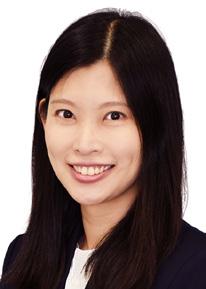
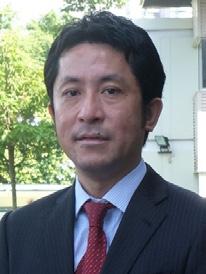
Dr Pieremanuele
NUS Department of Materials Science and Engineering
Designing Functional Interfaces of Batteries Using Theory and Computation
Dr Yvonne GAO
NUS Physics and Centre for Quantum Technologies
Enabling Scalable Quantum Computation via a Programmable Quantum Router
NUS Department of Pharmacy and Institute of Health Innovation and Technology (iHealthtech)
Engineering Personalized Cancer Vaccines Using Pluripotent Stem Cells- Derived Red Blood Cells As Artificial Antigen Presenting Cells
Dr Jun NISHIYAMA
Duke-NUS
Decoding Protein–Protein Interactions in Single Dendritic Spines
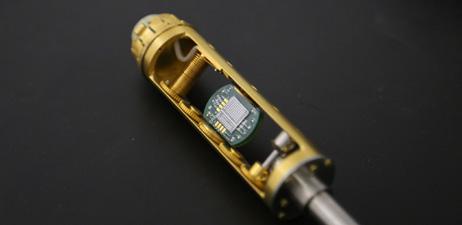
Prof Yang Hyunsoo and team developed a way to encode computational information without using electrical current

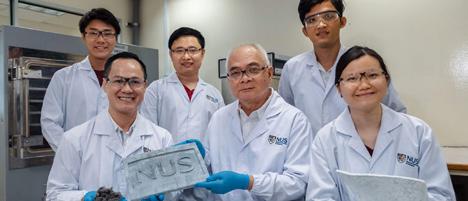
Assoc Prof Duong HaiMinh and Prof Nhan Phan-Thien developed the world’s frst aerogels made from scrap rubber tyres
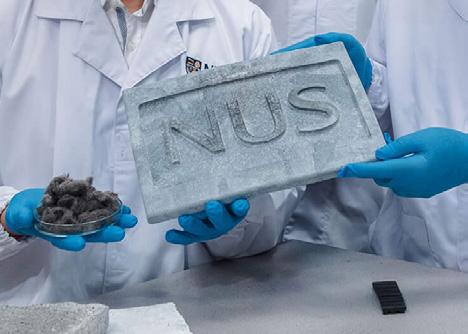
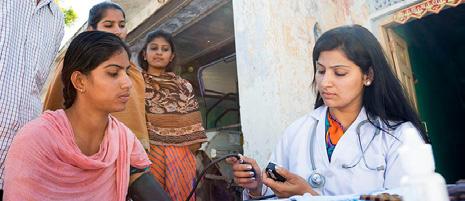
Prof Tazeen H Jafar showed how an intervention programme involving community health workers helps people with hypertension to lower their blood pressure
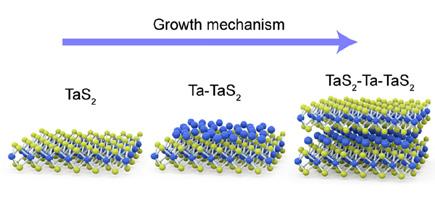
Prof Loh Kian Ping and Prof Stephen J Pennycook have created a library of atomically thin 2D materials
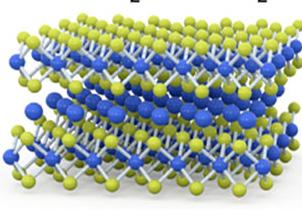
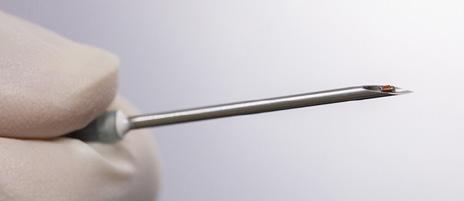
Asst Prof John Ho develop microsensor implants for 24/7 health monitoring
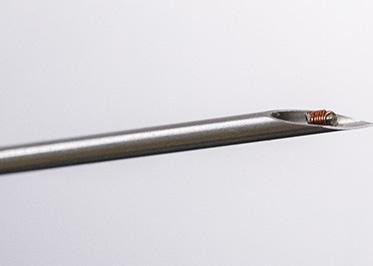
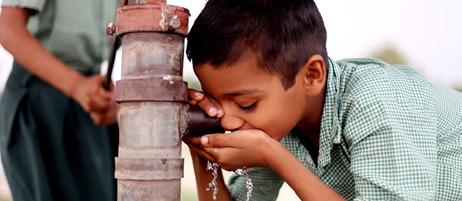
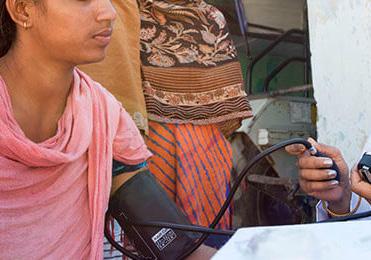
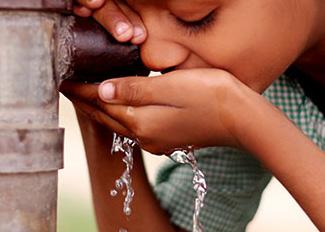
Assist Prof Sonia Akter identifed the negative impact salt consumption can have on children’s education
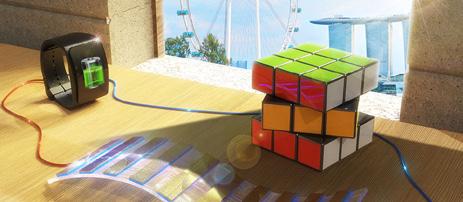
Asst Prof Tan Swee Ching created a device which makes use of the contrast in illumination between lit and shadowed areas to generate electricity
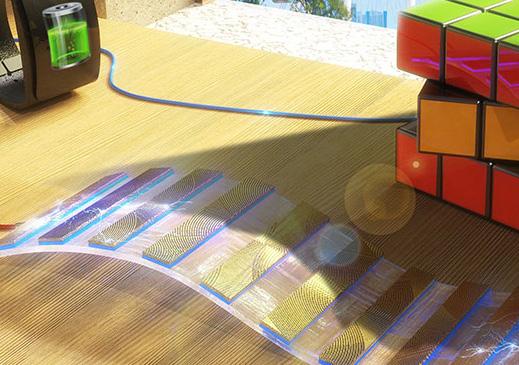
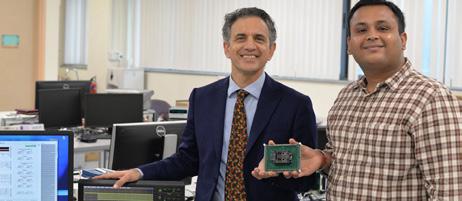
Prof Massimo Alioto invents a new silicon chip ‘fngerprint’ for stronger hardware security at low cost
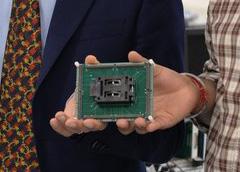
More research news from NUS Research News
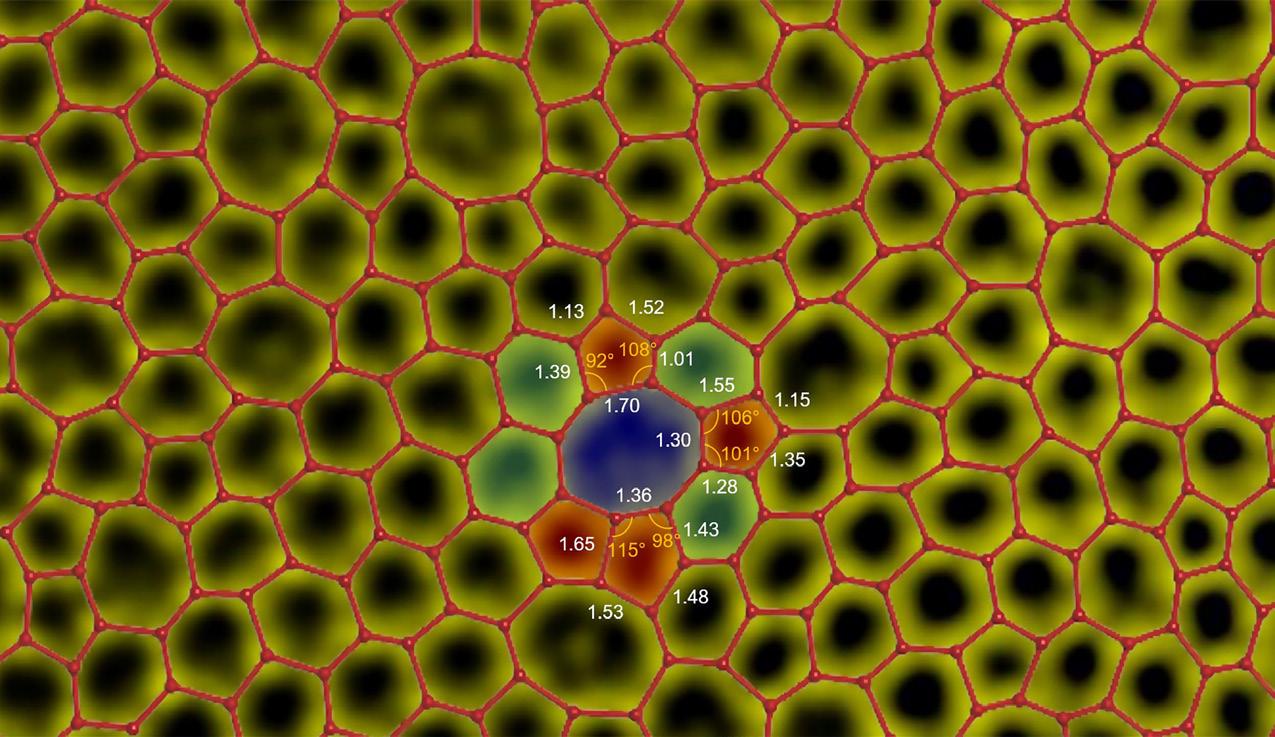
Researchers from NUS have synthesised the world’s frst one-atom-thick amorphous material. reviously thought to be impossible, the discovery of monolayer amorphous carbon MAC could fnally settle a decadesold debate of exactly how atoms are arranged in amorphous solids.
“ ith MAC, we have shown for the frst time that fully amorphous materials can be stable and free-standing in single atomic layers. Amorphous materials are of great technological importance, but surprisingly, they remain poorly understood from a basic science point of view. This breakthrough allows for direct imaging to reveal how atoms are arranged in amorphous materials, and could be of commercial value for batteries, semiconductors, membranes and many more applications,” said rof yilma , who is also from NUS hysics and the NUS Centre for Advanced 2D Materials.
In creating the material, the researchers observed nanometre-si ed patches of strained and distorted hexagonal carbon rings, but with random disorder between these patches. The MAC flms also contain -, -, and -membered rings too.
Despite having a disordered atomic structure, MAC is capable of some truly incredible behaviour. It may be stretched into irregular shapes, torn or have holes punched into it, yet it will retain its key properties. It can also be grown on many different substrates, including copper, gold or stainless steel. Such properties open up many avenues for potential applications.
This major research breakthrough was led by rofessor arbaros yilma , ead of the NUS Materials Science and ngineering. The results were published in the prestigious scientifc journal Nature on anuary 2020.
at NUS
Science and Engineering a e created t e r d s frst atomically thin amorphous car n f m e am r s structure has widely varying atom-to-atom distance unlike crystals. This is because of the rand m arrangement f e , six-, seven- and eight-carbon rings in a planar carbon network, leading to a wide distribution of bond lengths (in Å) and bond angles
Recently, a joint research team from NUS and the Indonesian Institute of Sciences I I made a quantum leap in the discovery of cryptic avian diversity by uncovering fve bird species and fve subspecies new to science.
The team, led by Associate rofessor Frank Rheindt from NUS iological Sciences, found the birds in three small island groups off Sulawesi, Indonesia. The islands are situated in Indonesia’s allacea region, an archipelago at the interface between the riental and Australian biogeographical realms, named after Sir Alfred allace,
who was the most famous historical collector exploring the area.
The results of the study, which were published in the journal Science on 10 anuary 2020, provide evidence that our understanding of species diversity of complex areas such as allacea remains incomplete even for relatively well-known groups such as birds. The fndings also suggest that modern exploration to fnd undescribed species diversity can be targeted to areas of high promise.
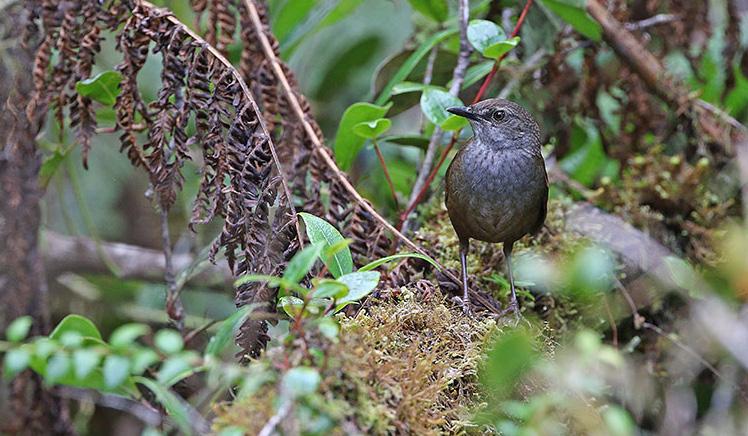
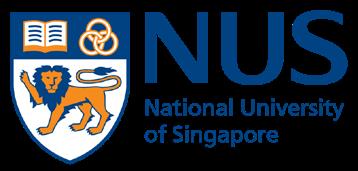
ffce of the Deputy resident Research Technology
nus.edu.sg research